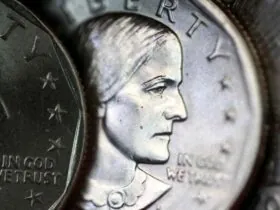A remarkable piece of American numismatic history, an 1870 $20 Double Eagle gold coin, was auctioned for $1.44 million by Stack’s Bowers Galleries in Southern California. This coin, minted in Carson City, Nevada, is one of the rarest and most sought-after in the world of coin collecting, sparking intense bidding among enthusiasts. Despite falling short of its projected $2 million price, the sale underscores the enduring appeal of rare coins to collectors worldwide.
A Unique Coin from Carson City’s Historic Mint
This Article Includes
The 1870 Double Eagle is steeped in history, originating from the Carson City Mint in Nevada, established during the height of the American Gold Rush. With a mintage of only 3,789 coins, it is estimated that only 40 to 50 examples remain today. The rarity of this coin has been a driving factor in its value, and its recent reemergence after decades out of the public eye was akin to a numismatic treasure discovery.
“This coin had been off the radar for nearly 30 years,” noted John Kraljevich, a coin historian at Stack’s Bowers Galleries. Its reappearance created significant excitement among collectors and experts alike.
The Crown Jewel of the Bernard Richards Collection
The sold coin comes from the Bernard Richards collection and is considered the finest known example of its type. According to the Professional Coin Grading Service, it received the highest grade ever given to this coin. Before the live auction, the bidding had already surged to $800,850, far exceeding other items in the catalogue.
Although its final sale price didn’t break the predicted $2 million mark, it nonetheless reflects the immense historical and monetary value placed on this exceptional coin.
From $23,100 to $1.44 Million: A Testament to Rising Coin Values
The coin’s prior appearance in a 1986 Stack’s auction saw it sell for just $23,100. This dramatic rise in value highlights how rare coins have become increasingly valuable over time. The trend accelerated during the COVID-19 pandemic, as collectors turned to tangible assets for investment and personal fulfillment.
Kraljevich emphasized that the $20 Double Eagle embodies both the artistry and the historical significance of 19th-century American coinage, making it a prized item in the numismatic world.
A Legacy of the California Gold Rush
The $20 Double Eagle was authorized in the wake of the California Gold Rush, which brought an influx of gold to the U.S. Mint. Before 1849, the largest denomination was the $10 eagle, but the Double Eagle was created to utilize the newfound wealth. Containing just under one ounce of gold, its intrinsic gold value is approximately $2,600 in today’s market—far below its numismatic worth.
Historic Comparisons: The 1933 Double Eagle
This sale also draws attention to other significant numismatic auctions. In 2021, a 1933 Double Eagle—a coin steeped in legal and historical intrigue—was sold for a record-breaking $18.9 million. Dubbed “the coin that took the U.S. off the Gold Standard,” the 1933 Double Eagle is an emblem of America’s economic transformation during the Great Depression.
A Bright Future for Rare Coins
The sale of the 1870 Double Eagle not only showcases the allure of historic coins but also serves as a reminder of the thriving interest in numismatics. While market fluctuations influence prices, the enduring demand for unique pieces of history ensures their continued value. As this rare coin changes hands, it becomes part of a legacy cherished by generations of collectors.







Leave a Reply